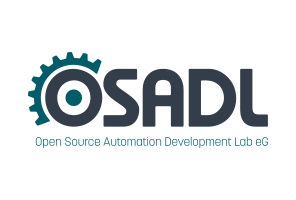Dates and Events:
|
OSADL Articles:
2023-11-12 12:00
Open Source License Obligations Checklists even better nowImport the checklists to other tools, create context diffs and merged lists
2022-07-11 12:00
Call for participation in phase #4 of Open Source OPC UA open62541 support projectLetter of Intent fulfills wish list from recent survey
2022-01-13 12:00
Phase #3 of OSADL project on OPC UA PubSub over TSN successfully completedAnother important milestone on the way to interoperable Open Source real-time Ethernet has been reached
2021-02-09 12:00
Open Source OPC UA PubSub over TSN project phase #3 launchedLetter of Intent with call for participation is now available |
Real Time Linux Workshops
1999 - 2000 - 2001 - 2002 - 2003 - 2004 - 2005 - 2006 - 2007 - 2008 - 2009 - 2010
Tenth Real-Time Linux Workshop on October 29 to November 1st, 2008, in Guadalajara, Mexico
A Distributed Robot Control Architecture Using RTAI
Diego Caberlon Santini and Walter Fetter Lages
In this paper, we present a distributed system to fill the need for an open architecture for robot control. The system is based on simple processing nodes called Actuator Interface Cards (AIC). The hardware is composed by an AIC for each joint of the robot. Each AIC contains a dspPIC processor and can drive a D.C. motor with nominal voltage ranging from 12V to 60V through a PWM converter. Also, it interfaces with an incremental encoder performing quadrature decoding. A CANbus is used for real-time data transfer such as sensor measurements and actuator commands, between each AIC and a host PC. A real-time library running in the host PC, models the devices embedded in each AIC and supports all the possible operations, for example: shutoff and voltage setting for the motors and reading of count for encoders. This library also implements the communication with AICs using a protocol where a priority is associated with each command and card, thus ensuring the real-time requirements. The library accesses the AICs through CANbus with a real-time driver. A simple PID controller was implemented as a hard real-time thread in user-space using RTAI/LXRT modules to demonstrate the use of AIC and the real- time performance. Currently, an integration of the proposed architecture with the OROCOS project is under development.




